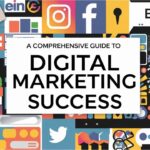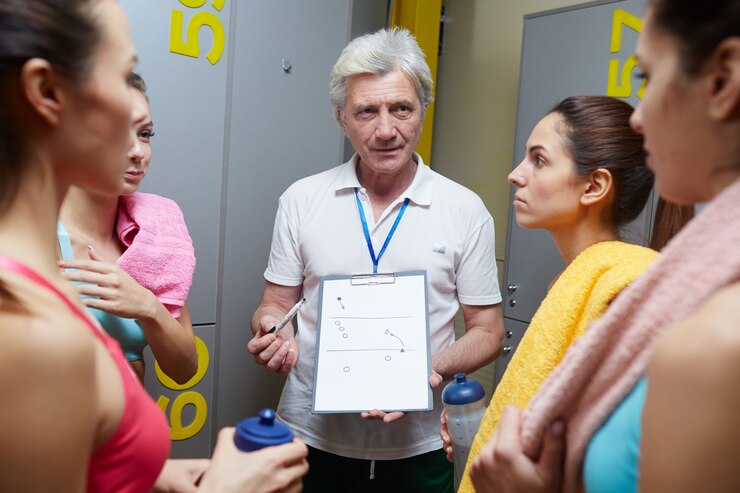Your resume is one of the most important tools in your job search. It’s your first chance to make a good impression on potential employers and showcase your skills, experiences, and qualifications. Knowing how to make a resume that stands out from the competition is crucial to landing your dream job. In this comprehensive guide, we’ll walk you through each step of creating a resume, from choosing the right format to highlighting your most relevant achievements.
Whether you’re starting from scratch or refreshing an existing resume, this guide will help you craft a resume that is both professional and tailored to your target role.
Why Having a Strong Resume Is Important
Before diving into the mechanics of resume writing, it’s essential to understand why having a strong resume is crucial. A resume acts as a snapshot of your career and helps hiring managers quickly determine if you’re a good fit for a role.
Key Benefits of a Strong Resume:
- Grabs Attention Quickly: Recruiters often spend only a few seconds reviewing a resume, so yours must make a strong impact right away.
- Showcases Your Value: A well-written resume highlights your skills and experiences, showing why you are the right person for the job.
- Opens Doors to Interviews: A compelling resume will increase your chances of being called for an interview, which is the next step toward landing the job.
- Sets You Apart: In a competitive job market, a resume that stands out can give you an edge over other applicants.
Let’s dive into the steps of making a professional resume that will help you stand out and make a lasting impression.
1. Choose the Right Resume Format
The first step in how to make a resume is selecting the right format. The format you choose should reflect your experience, skills, and the type of job you’re applying for. There are three main resume formats to consider:
Chronological Resume
This is the most common resume format. It lists your work experience in reverse chronological order, starting with your most recent position. It’s ideal for people with a consistent work history and relevant job experience.
Functional Resume
A functional resume focuses on your skills and abilities rather than your work history. It’s a good choice for people who are changing careers, have employment gaps, or are entering the workforce for the first time.
Combination Resume
This format blends elements of both the chronological and functional resumes. It highlights your skills while also providing a detailed work history. It’s ideal for those who have strong skills but also want to showcase their professional experience.
Which Format Should You Choose?
- If you have a steady career path and relevant experience, go for a chronological resume.
- If you’re a recent graduate, changing careers, or have gaps in your work history, consider a functional resume.
- If you want to emphasize both skills and experience, opt for a combination resume.
2. Start with a Strong Contact Information Section
At the top of your resume, include a clearly defined contact information section. This is where hiring managers will find your basic details, so ensure that everything is accurate and up-to-date.
What to Include:
- Your Full Name
- Phone Number: Make sure it’s a number you can answer during business hours.
- Professional Email Address: Avoid using overly casual or unprofessional email addresses (e.g., cooldude123@gmail.com). Create a professional address using your name if possible.
- Location: Include your city and state, but you don’t need to list your full address.
- LinkedIn Profile or Professional Website: If relevant, include a link to your LinkedIn profile or personal website that showcases your work.
Example of a Contact Information Section:
John Doe
john.doe@email.com
(555) 123-4567
LinkedIn: linkedin.com/in/johndoe
City, State
3. Write a Compelling Resume Summary or Objective
Your resume needs to start strong, and the best way to do that is with a resume summary or objective. This brief section—typically 2-3 sentences—should capture the attention of the recruiter by summarizing who you are and what you bring to the table.
Resume Summary
A summary is best for candidates with relevant work experience. It highlights your key skills and achievements, giving recruiters a quick overview of your qualifications.
Example of a Resume Summary:
Experienced marketing professional with 5+ years of expertise in digital marketing strategies, SEO optimization, and content creation. Proven track record of increasing online traffic and engagement through data-driven campaigns. Skilled in Google Analytics, SEMrush, and social media management.
Resume Objective
An objective is more appropriate for recent graduates or those changing careers. It focuses on what you’re looking to achieve in your next role rather than your past accomplishments.
Example of a Resume Objective:
Recent business administration graduate seeking a challenging position in project management to apply strong organizational and leadership skills. Eager to contribute to a dynamic team environment and grow within a fast-paced company.
4. Highlight Your Work Experience
Your work experience section is the core of your resume, especially if you’re using a chronological or combination format. This section showcases your employment history, including relevant roles and key achievements.
How to Structure the Work Experience Section:
- Job Title: Your most recent or relevant job title.
- Company Name: Include the name of the organization you worked for.
- Location: City and state of the company.
- Dates of Employment: List the month and year of your start and end dates.
- Key Responsibilities and Achievements: Use bullet points to describe your duties and accomplishments. Focus on quantifiable results and specific contributions that demonstrate your impact.
Example of a Work Experience Entry:
Marketing Specialist
XYZ Corporation – New York, NY
June 2018 – Present
- Developed and executed digital marketing campaigns that increased website traffic by 35%.
- Managed SEO strategy that improved organic search rankings for top 10 keywords.
- Coordinated social media outreach, increasing engagement by 25% within 6 months.
- Trained and supervised a team of three junior marketers.
Tips for Crafting an Effective Work Experience Section:
- Use Action Verbs: Begin each bullet point with a strong action verb (e.g., “developed,” “managed,” “led,” “increased”).
- Quantify Your Achievements: Whenever possible, use numbers to show your impact (e.g., “increased sales by 20%” or “led a team of 10 employees”).
- Tailor It to the Job: Customize your experience section to match the job description, highlighting relevant achievements that align with the role you’re applying for.
5. Showcase Your Skills
The skills section is a vital part of your resume, especially if you’re applying for jobs that require specific technical or hard skills. Be sure to include both hard skills (technical abilities like software proficiency or coding languages) and soft skills (interpersonal traits like communication and leadership).
Examples of Hard and Soft Skills:
| Hard Skills | Soft Skills |
|---|---|
| Data Analysis | Communication |
| Project Management | Team Leadership |
| Microsoft Excel | Problem-Solving |
| Web Development (HTML, CSS, JavaScript) | Time Management |
| Adobe Photoshop | Adaptability |
6. Include Your Education
The education section of your resume should list your academic background, especially if it’s relevant to the job you’re applying for. Include the following:
- Degree: Bachelor’s, Master’s, Associate’s, etc.
- School Name and Location
- Graduation Date: Include your graduation date or expected graduation date.
- GPA (Optional): Include your GPA if it’s above 3.5 and you’re a recent graduate.
- Relevant Coursework or Honors (Optional): Highlight any courses or academic honors that are relevant to the position.
Example of an Education Section:
Bachelor of Science in Computer Science
University of California, Berkeley – Berkeley, CA
Graduated May 2020
Relevant Coursework: Data Structures, Machine Learning, Artificial Intelligence
7. Add Certifications, Awards, or Other Sections
If you have additional qualifications, such as certifications or professional development courses, include them in a separate section to further enhance your resume. This can help set you apart from other candidates.
Examples of Additional Sections:
- Certifications: Relevant industry certifications, such as PMP (Project Management Professional) or Google Analytics certification.
- Awards: Professional or academic awards, such as “Employee of the Month” or “Dean’s List.”
- Languages: If you’re fluent in multiple languages, list them here.
- Volunteer Work: If you have volunteer experience that aligns with the job, mention it.











